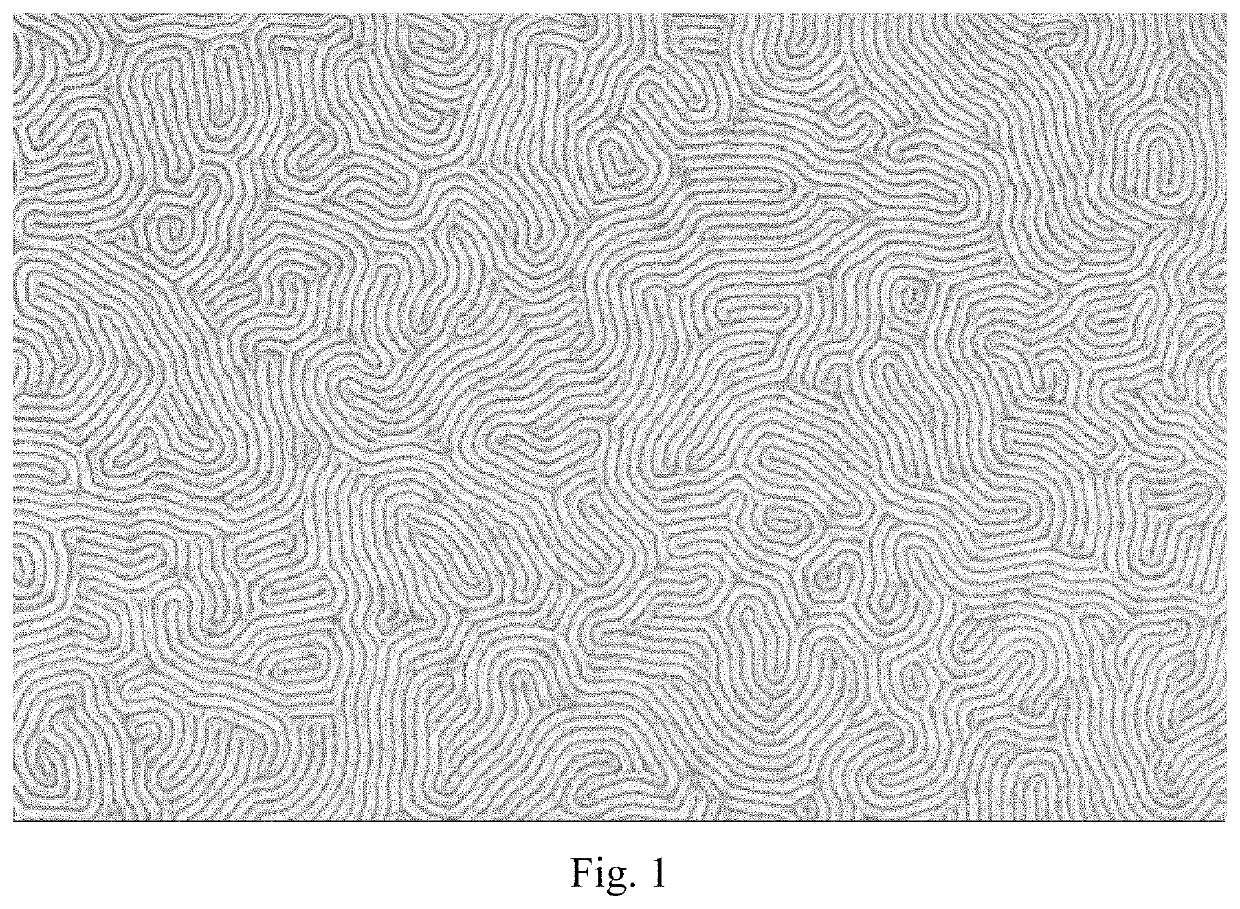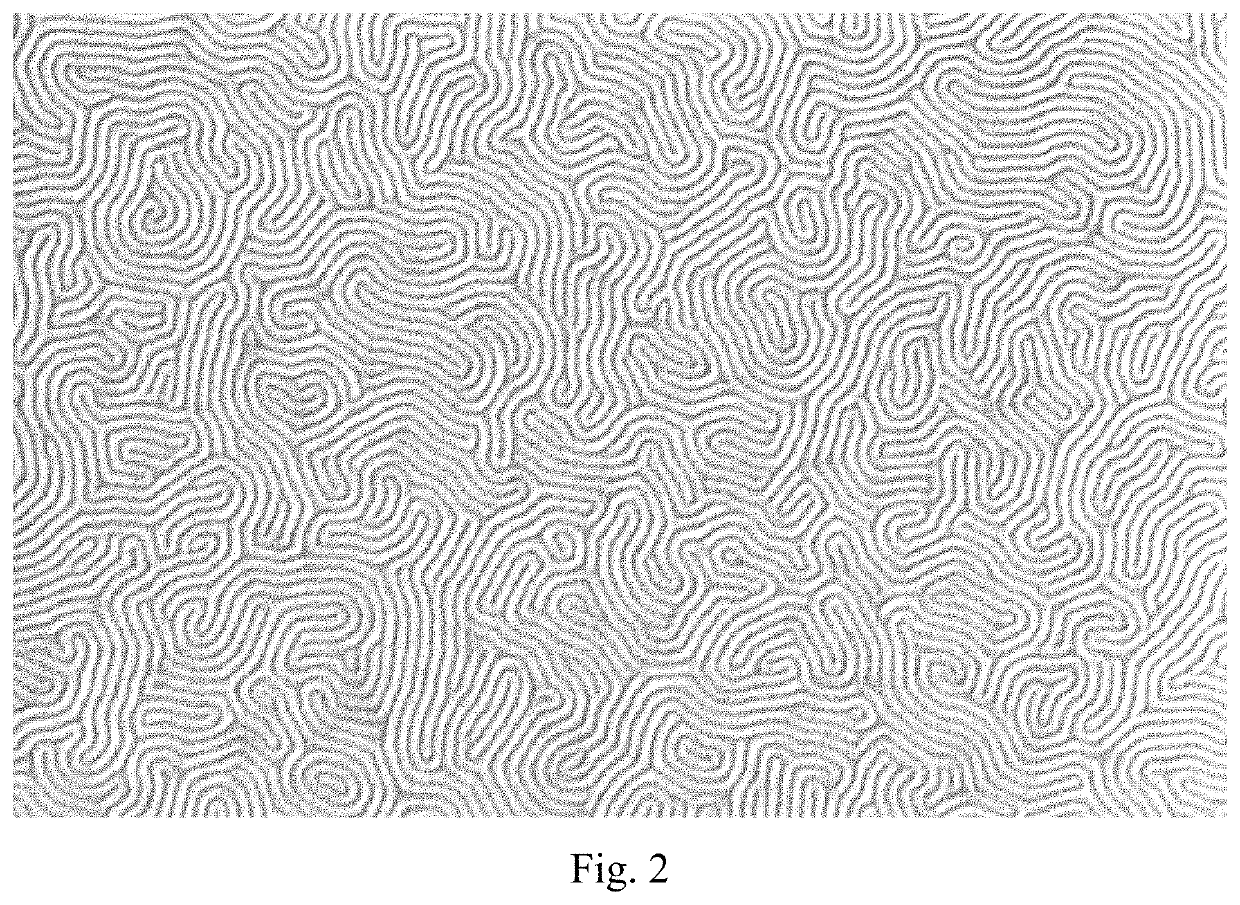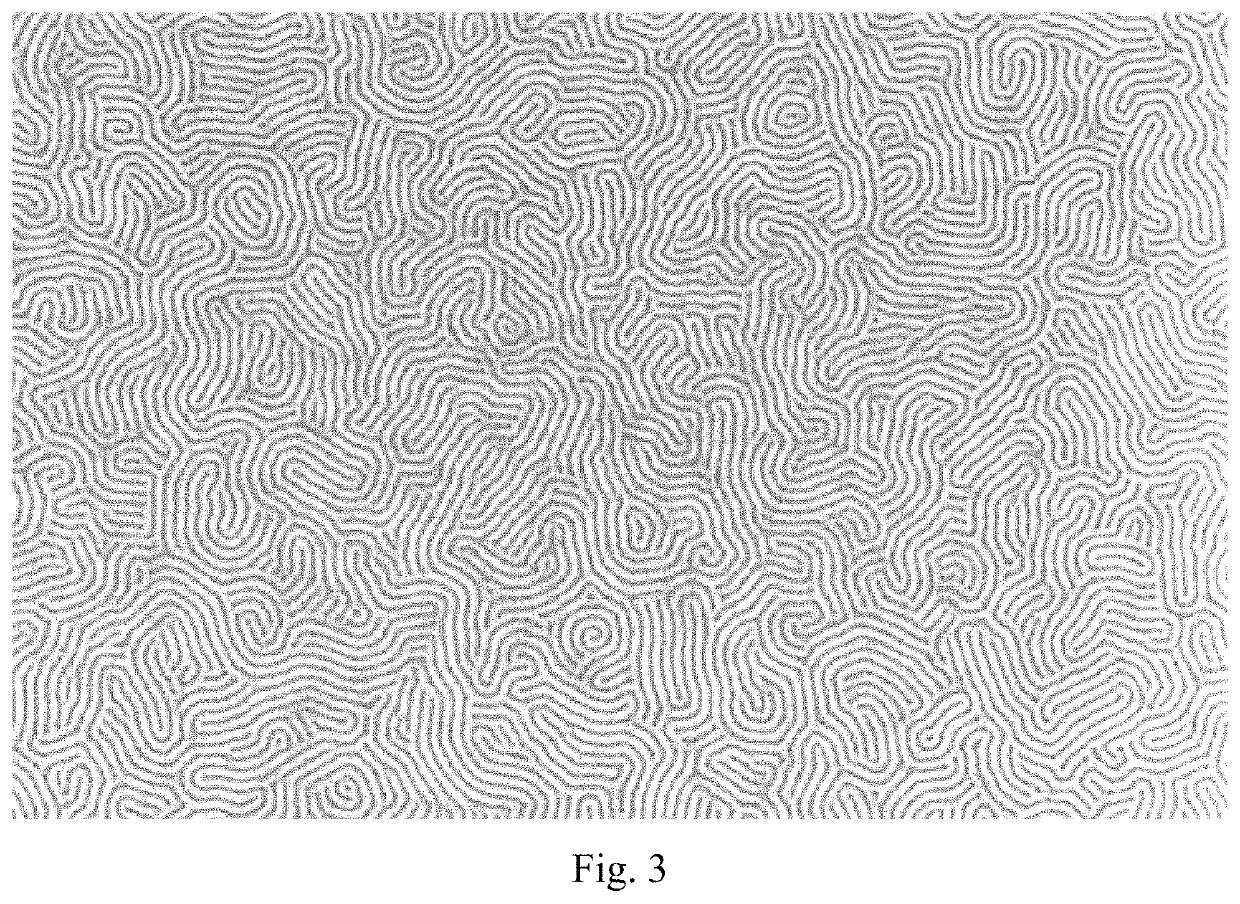High-χ block copolymers for directed self-assembly
a high- block, self-assembly technology, applied in the field of polymers, can solve the problems of increasing manufacturing cost and complication, increasing manufacturing cost, and increasing the difficulty of conventional photolithography techniques, and achieve the effect of facilitating alignment and surface energy
- Summary
- Abstract
- Description
- Claims
- Application Information
AI Technical Summary
Benefits of technology
Problems solved by technology
Method used
Image
Examples
example 1
Synthesis of P(MMA-r-HEMA)
[0085]Methyl methacrylate (19.02 g, Sigma Aldrich, St. Louis, Mo.), 2-hydroxyethyl methacrylate (1.30 g, Sigma Aldrich, St. Louis, Mo.), 2-cyano-2-propyl benzodithioate (0.161 g, Strem Chemicals Inc., Newburyport, Mass.), 2,2′-azobis(2-methylpropionitrile) (0.015 g, Sigma Aldrich, St. Louis, Mo.), and ethyl acetate (30 g, Alfa Aesar, Ward Hill, Mass.) were added to a round bottom flask and purged for 30 minutes with N2. The reaction was heated at 60° C. for 16 hours before being cooled to room temperature, diluted with acetone (Sigma Aldrich, St. Louis, Mo.) and precipitated into hexanes (450 mL, Alfa Aesar, Ward Hill, Mass.). The resulting powder was collected by vacuum filtration and dried under vacuum overnight at 45° C. Finally, 10.8 grams of P(MMA-r-HEMA) was collected and analyzed by GPC to be 13.1 kg / mol relative to PS standards with a PDI of 1.07.
example 2
Chain Extension with Styrene
[0086]In this procedure, 1.6 grams of 13.1k P(MMA-r-HEMA) from Example 1 was mixed with 9.37 grams of styrene (TCI America, Portland, Oreg.), 4.2 milligrams of 2,2′-azobis(2-methylpropionitrile) (Sigma Aldrich, St. Louis, Mo.), and 9 grams of toluene (Sigma Aldrich, St. Louis, Mo.). The solution was purged with N2 for 30 minutes and heated to 80° C. for 16 hours before being cooled to room temperature, diluted with acetone (Sigma Aldrich, St. Louis, Mo.), and precipitated into a 2:1 (v / v) mixture of cyclohexane (Alfa Aesar, Ward Hill, Mass.) to hexanes (Alfa Aesar, Ward Hill, Mass.). The resulting powder was collected by vacuum filtration and dried under vacuum overnight at 45° C. Finally, 3.0 grams of P(MMA-r-HEMA)-b-PS was collected and analyzed by GPC to be 31.8 kg / mol relative to PS standards with a PDI of 1.12.
example 3
Chain Extension with Styrene, 4-Vinylbiphenyl, and 4-Methylstyrene
[0087]In this Example, 1.6 grams of 13.1k P(MMA-r-HEMA) from Example 1 was mixed with 2.58 grams of styrene (TCI America, Portland, Oreg.), 1.98 grams of 4-vinylbiphenyl (Proactive Molecular Research, Alachua, Fla.), 2.27 grams of 4-methylstyrene (Sigma Aldrich, St. Louis, Mo.), 4.2 milligrams of 2,2′-azobis(2-methylpropionitrile) (Sigma Aldrich, St. Louis, Mo.), and 9 grams of toluene (Sigma Aldrich, St. Louis, Mo.). The solution was purged with N2 for 30 minutes and heated to 80° C. for 16 hours before being cooled to room temperature, diluted with acetone (Sigma Aldrich, St. Louis, Mo.) and precipitated into a 2:1 (v / v) mixture of cyclohexane (Alfa Aesar, Ward Hill, Mass.) to hexanes (Alfa Aesar, Ward Hill, Mass.). The resulting powder was collected by vacuum filtration and dried under vacuum overnight at 45° C. Finally, 3.1 grams of P(MMA-r-HEMA)-b-P(S-r-VBP-r-4-methylstyrene) was collected and analyzed by GPC to ...
PUM
| Property | Measurement | Unit |
|---|---|---|
| polydispersity index | aaaaa | aaaaa |
| polydispersity index | aaaaa | aaaaa |
| Tg | aaaaa | aaaaa |
Abstract
Description
Claims
Application Information
 Login to View More
Login to View More - R&D
- Intellectual Property
- Life Sciences
- Materials
- Tech Scout
- Unparalleled Data Quality
- Higher Quality Content
- 60% Fewer Hallucinations
Browse by: Latest US Patents, China's latest patents, Technical Efficacy Thesaurus, Application Domain, Technology Topic, Popular Technical Reports.
© 2025 PatSnap. All rights reserved.Legal|Privacy policy|Modern Slavery Act Transparency Statement|Sitemap|About US| Contact US: help@patsnap.com



